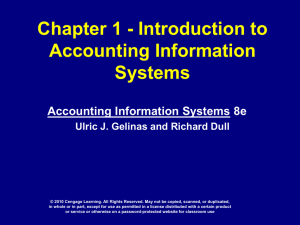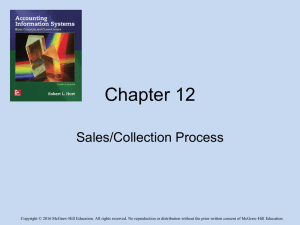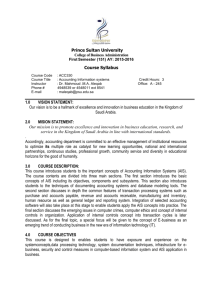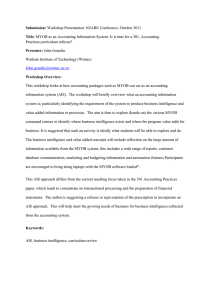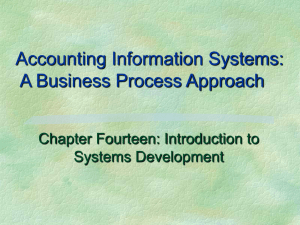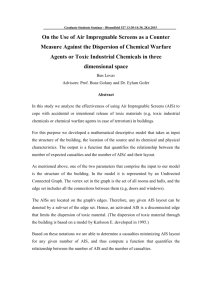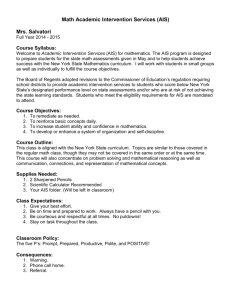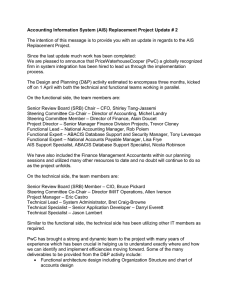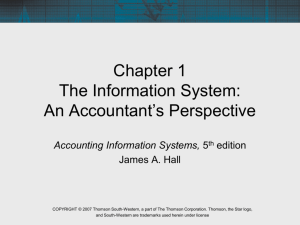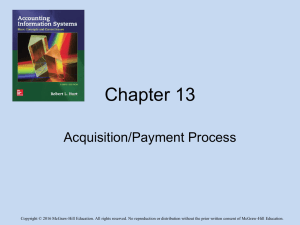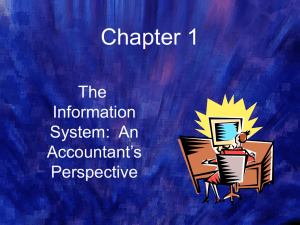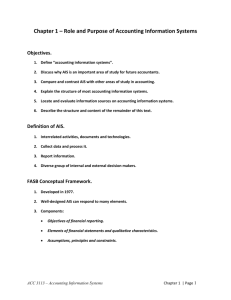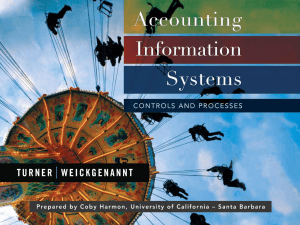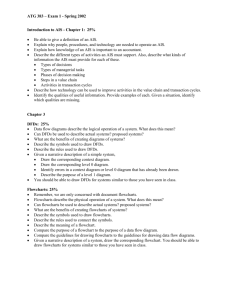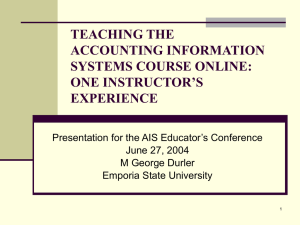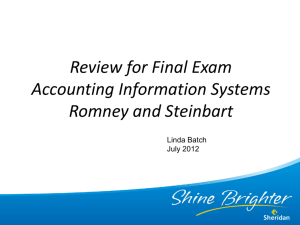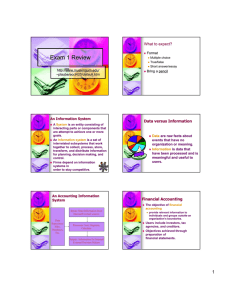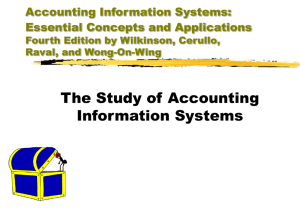- C5. DEFINITIVE COURSE DOCUMENT AND COURSE FILE
advertisement
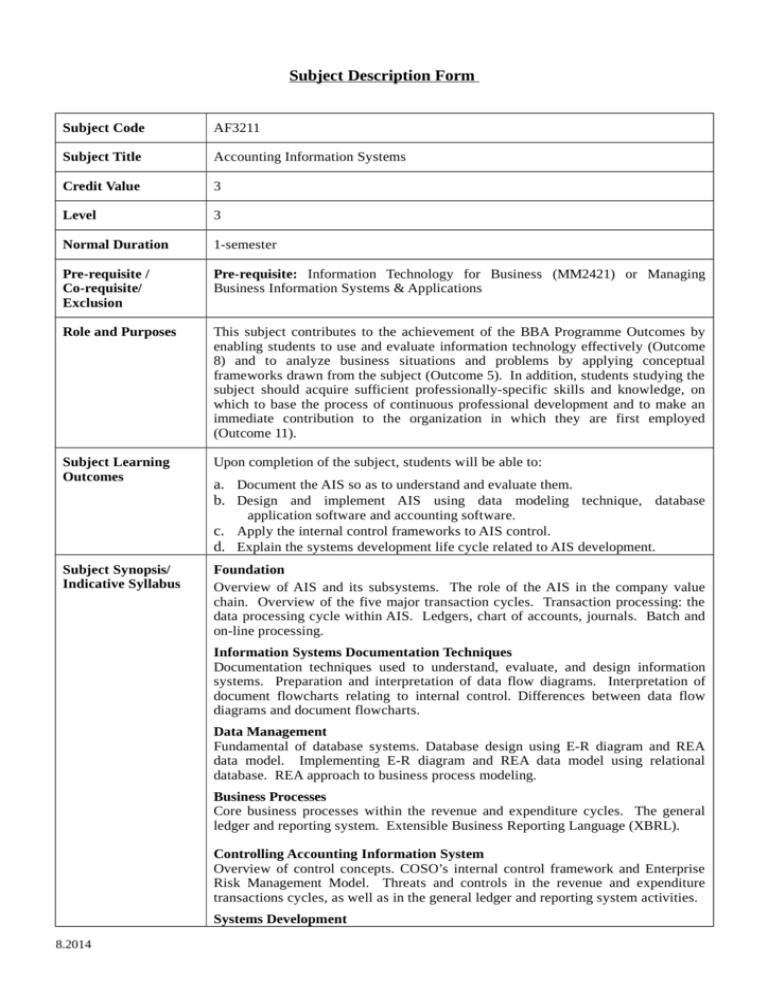
Subject Description Form Subject Code AF3211 Subject Title Accounting Information Systems Credit Value 3 Level 3 Normal Duration 1-semester Pre-requisite / Co-requisite/ Exclusion Pre-requisite: Information Technology for Business (MM2421) or Managing Business Information Systems & Applications Role and Purposes This subject contributes to the achievement of the BBA Programme Outcomes by enabling students to use and evaluate information technology effectively (Outcome 8) and to analyze business situations and problems by applying conceptual frameworks drawn from the subject (Outcome 5). In addition, students studying the subject should acquire sufficient professionally-specific skills and knowledge, on which to base the process of continuous professional development and to make an immediate contribution to the organization in which they are first employed (Outcome 11). Subject Learning Outcomes Upon completion of the subject, students will be able to: a. Document the AIS so as to understand and evaluate them. b. Design and implement AIS using data modeling technique, database application software and accounting software. c. Apply the internal control frameworks to AIS control. d. Explain the systems development life cycle related to AIS development. Subject Synopsis/ Indicative Syllabus Foundation Overview of AIS and its subsystems. The role of the AIS in the company value chain. Overview of the five major transaction cycles. Transaction processing: the data processing cycle within AIS. Ledgers, chart of accounts, journals. Batch and on-line processing. Information Systems Documentation Techniques Documentation techniques used to understand, evaluate, and design information systems. Preparation and interpretation of data flow diagrams. Interpretation of document flowcharts relating to internal control. Differences between data flow diagrams and document flowcharts. Data Management Fundamental of database systems. Database design using E-R diagram and REA data model. Implementing E-R diagram and REA data model using relational database. REA approach to business process modeling. Business Processes Core business processes within the revenue and expenditure cycles. The general ledger and reporting system. Extensible Business Reporting Language (XBRL). Controlling Accounting Information System Overview of control concepts. COSO’s internal control framework and Enterprise Risk Management Model. Threats and controls in the revenue and expenditure transactions cycles, as well as in the general ledger and reporting system activities. Systems Development 8.2014 Systems Development Life Cycle (SDLC). The role of accountants in SDLC. Behavioral aspects of change. Development strategies for AIS software. End-user computing. Benefits and risks of IT outsourcing. Business process reengineering. Systems implementation and conversion. Teaching/Learning Methodology Assessment Methods in Alignment with Intended Learning Outcomes This course will use an integrative approach that combines lectures, exercises, and computer laboratory work within a three-hour session. Students will have opportunity to gain hands on experience in using certain database and accounting software applications. Specific assessment methods/tasks % weighting Intended subject learning outcomes to be assessed (Please tick as appropriate) a b c d Continuous Assessment 50% 1. Midterm test 30% √ √ 2. Database assignment 7% √ √ 3. System implementation assignment 7% 4. Class participation 6% √ √ √ √ 50% √ √ √ √ Final Examination Total √ 100 % To pass this subject, students are required to obtain Grade D or above in both the Continuous Assessment and Examination components. Student Study Effort Required Class contact: Seminar / Laboratory 39 Hrs. Other student study effort: Take home assignments 20 Hrs. Studying after class 46 Hrs. Total student study effort 8.2014 105 Hrs. Reading List and References Romney, M.B. and P.J. Steinbart, Accounting Information Systems, Latest Edition, Prentice Hall. Li, D.C., Computerized Accounting Using MYOB, McGraw-Hill Education (Asia), 2004. Perry, J.T. and G.P. Schneider, Building Accounting Systems Using Access 2003, South-Western College Publishing, 2004. Arens, A.A., Systems understanding aid, 5th Edition, Armond Dalton, 2001. Gelinas, U.J. Jr., S.G. Sutton and J. Hunton, Accounting Information Systems, Latest Edition, South-Western Publishing. MYOB Premier user guide, Latest Version, MYOB Hong Kong. 8.2014

